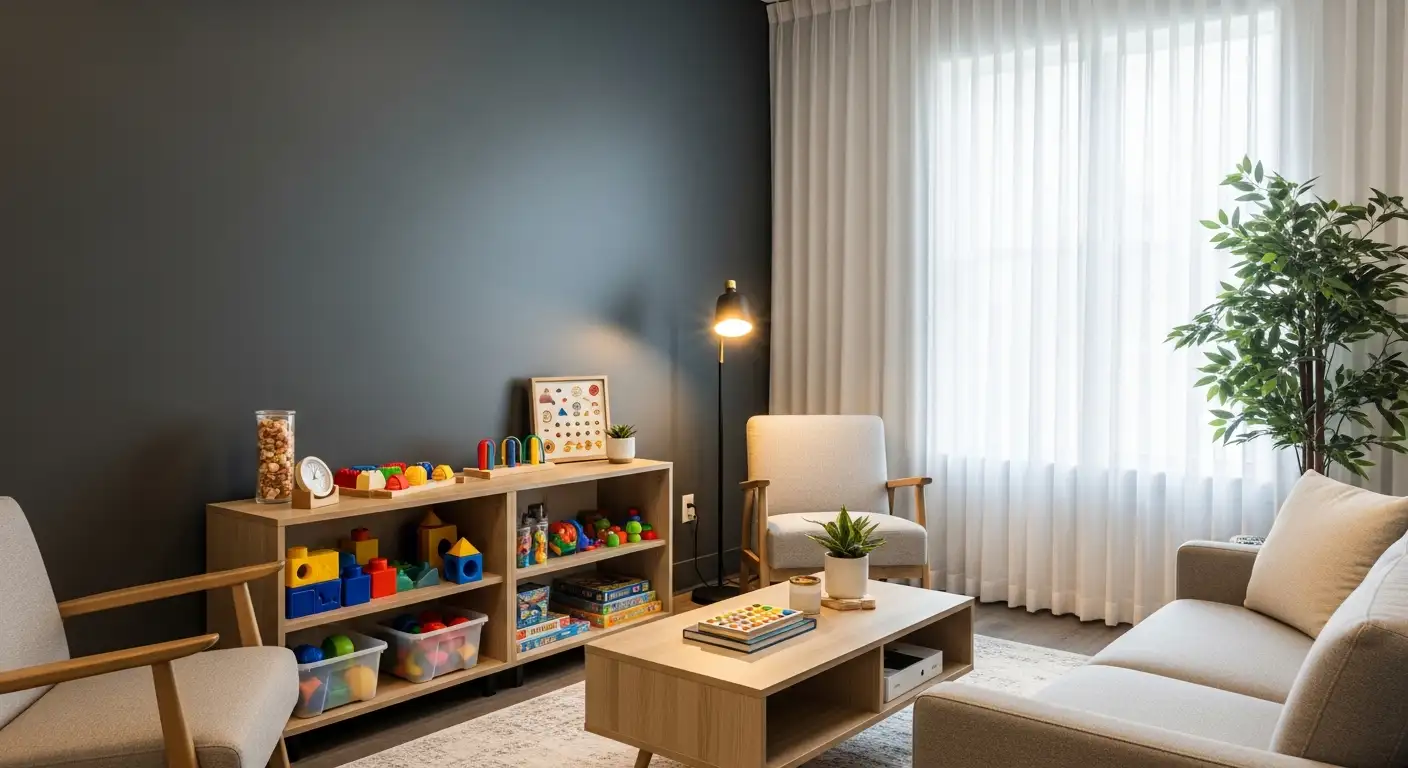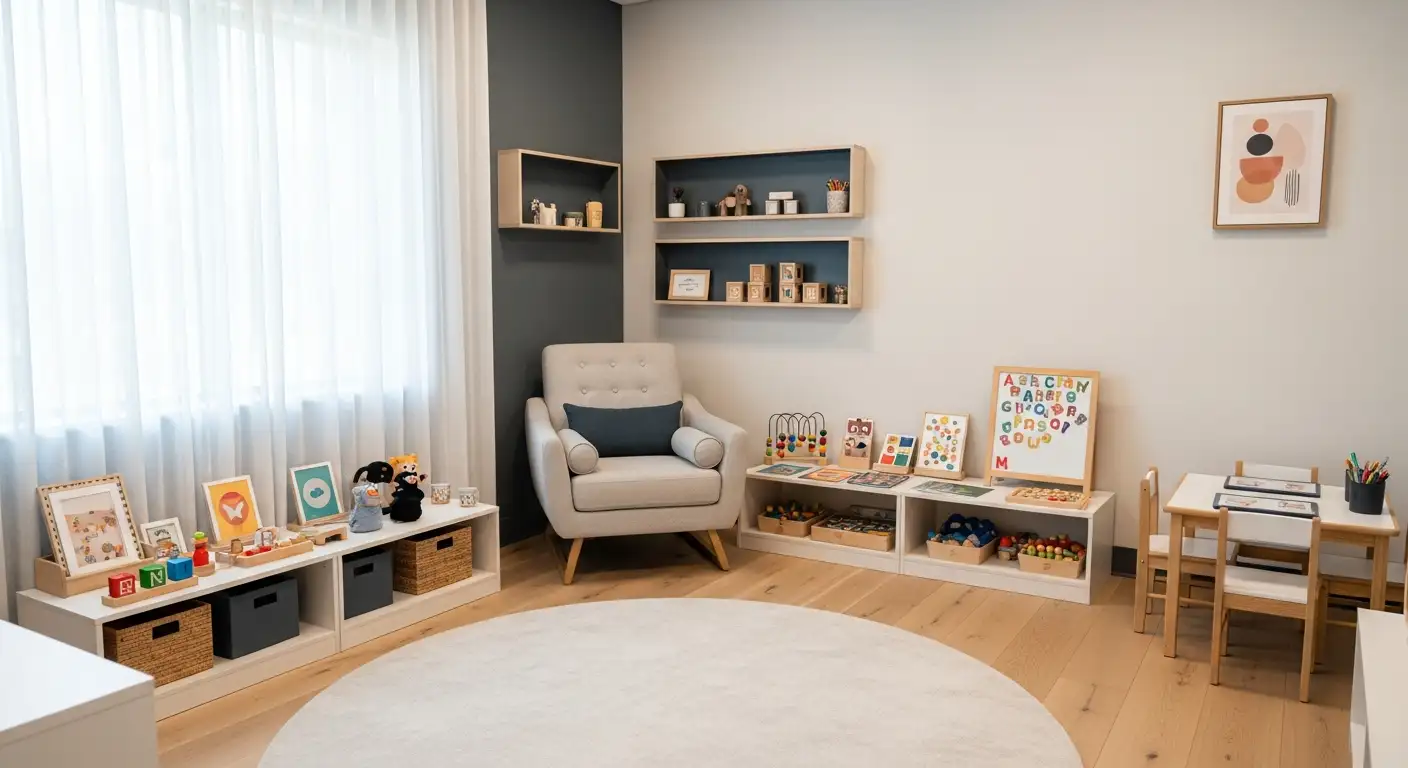The Benefits of Group Therapy for Children with Autism and Social Anxiety
Unlocking Social Potential: How Group Therapy Transforms Lives of Children with Autism and Social Anxiety

Understanding the Power of Group Therapy in Supporting Autism and Anxiety
Group therapy has emerged as a highly effective approach for helping children with autism spectrum disorder (ASD) and social anxiety develop essential social, emotional, and communication skills. Through structured activities and peer interactions, children can gain confidence, improve their social understanding, and generalize skills to real-world environments. This article explores various facets of group therapy, highlighting evidence-based benefits, innovative strategies, and the structured programs that make these interventions impactful.
The Evidence Supporting Group Social Skills Interventions
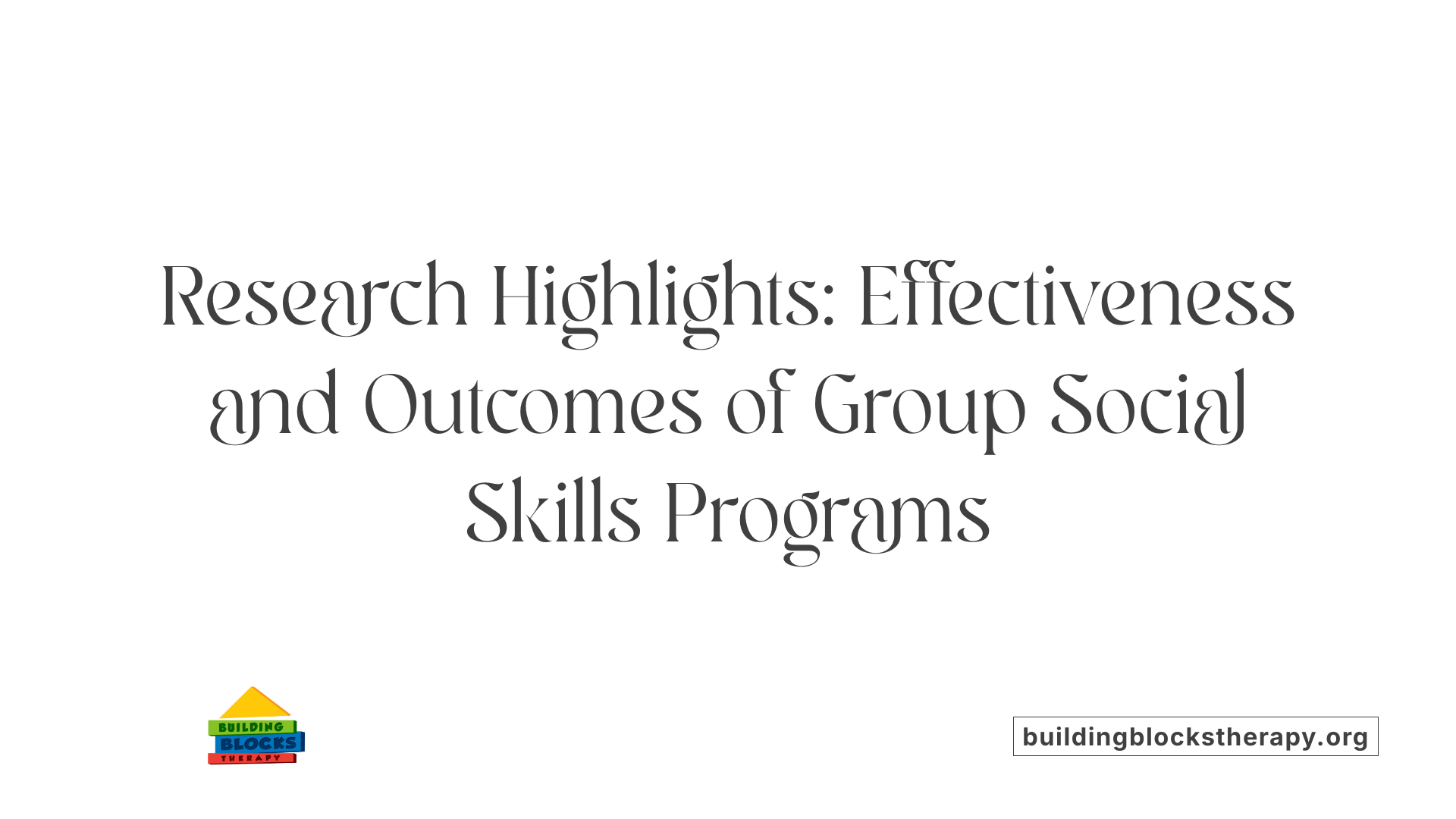
What is the evidence supporting the efficacy of group social skills interventions for children with autism and social anxiety?
Research indicates that group-based social skills interventions (GSSIs) are effective in improving social competence in youth with autism spectrum disorder (ASD) and social anxiety. Several high-quality studies, including systematic reviews and meta-analyses of randomized controlled trials (RCTs), have demonstrated positive effects, with effect sizes generally ranging from small to moderate (around 0.28 to 0.60).
These interventions often utilize approaches such as social skills training, video modeling, peer-mediated activities, and cognitive-behavioral therapy (CBT). They have shown significant improvements in social participation, social engagement, and responsiveness. For example, structured activities like role-playing, cooperative games, and social stories help children practice social interactions in a safe environment.
Techniques like video modeling are particularly effective, with some studies reporting participation-to-need (PND) scores over 80%. This suggests a high level of skill acquisition and engagement. Peer-mediated strategies, where children learn from and interact with their peers, along with social stories that explain social norms, also contribute to positive outcomes, though their success can vary depending on individual and environmental factors.
These programs often include activities that encourage emotional regulation, imitation, and understanding of social cues, which are critical areas for children with ASD. Notably, gains from these interventions often transfer to real-world settings, such as school and community environments, especially when sessions are intensive and involve face-to-face interactions.
In summary, the evidence strongly supports the use of group social skills interventions as an effective component of treatment plans aimed at enhancing social functioning among children with ASD and social anxiety, with benefits enduring over time and spreading across multiple social domains.
Structured and Effective Group Therapy Programs
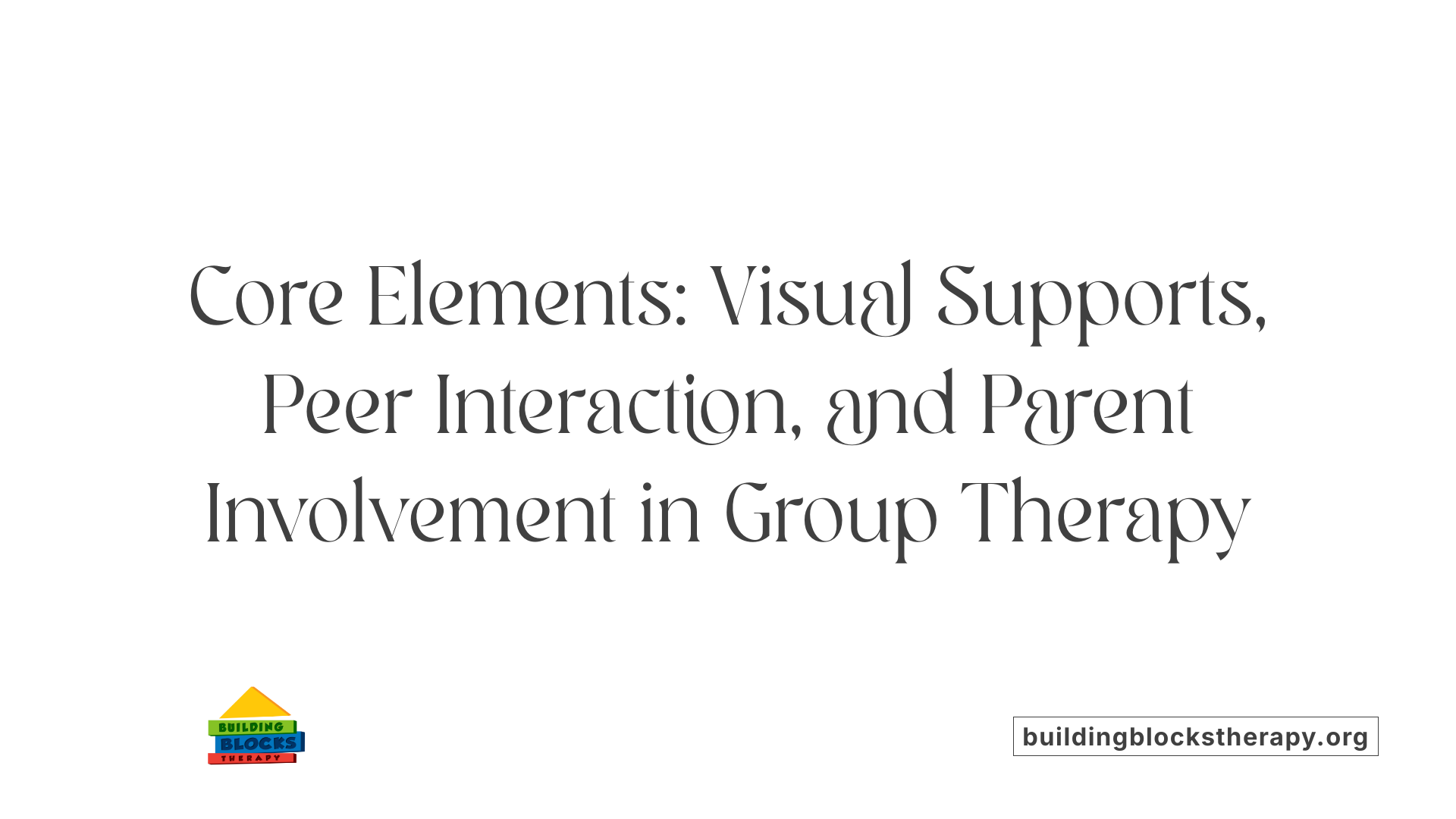
How are effective group therapy programs for children with autism and social anxiety structured and conducted?
Group therapy tailored for children with autism spectrum disorder (ASD) and social anxiety aims to improve social interactions, emotional regulation, and confidence. These programs are carefully designed to suit the specific needs of children with ASD by combining evidence-based methods like social skills training, cognitive-behavioral techniques, and emotion management exercises.
The structure of these programs emphasizes clarity and consistency. Sessions often incorporate visual supports, such as picture schedules, social stories, and visual aids like worksheets or video modeling. These tools help children understand what to expect, follow instructions, and stay engaged during activities.
Groups are kept small—usually 3 to 6 children—to create a supportive atmosphere that allows for personalized attention. This size fosters meaningful peer interactions and gives therapists the opportunity to provide direct feedback. The activities within sessions include role-playing, cooperative games, and social stories, which simulate real-life situations and promote practical skill development.
A typical session begins with clear goals, followed by warm-up activities that prepare children for interaction. Role-playing and peer interactions are central components, allowing children to practice social skills like eye contact, verbal communication, and conflict resolution. Additionally, practice opportunities are often repeated and reinforced, increasing the likelihood of skill generalization to settings like school and community.
Parental involvement is a significant aspect of successful group therapy. Therapists often assign homework tasks designed to reinforce skills learned during sessions and encourage practice at home. This collaboration supports consistency and helps translate therapy gains into everyday life.
To accommodate individual sensitivities and reduce anxiety, programs include modifications such as visual cues, structured routines, and sensory activities. These adaptations help make children feel safe and engaged, increasing their participation and motivation.
The combination of structured activities, visual supports, peer interactions, and parental involvement leads to improvements in social confidence, communication, and emotional regulation. Overall, well-designed group therapy provides a secure environment where children can learn, practice, and apply social skills with peers and support staff, fostering lasting growth and competence.
Innovative and Creative Approaches in Group Therapy
What innovative or creative group therapy approaches can support social and emotional development in children with autism?
Group therapy for children with autism has evolved to include a variety of inventive and engaging approaches that promote social and emotional growth. Nonverbal techniques play a crucial role in these innovative methods. Sensory-motor activities, for example, encourage children to engage their bodies, improve body awareness, and foster spontaneous movement, which are vital for developing social reciprocity and emotional regulation.
Using props such as stretch bands, drawing materials, and musical instruments enhances sensory engagement and encourages interaction. For instance, children may work together to create shared art projects or participate in rhythmic activities that promote cooperation and understanding. These objects not only serve as tools for expression but also help activate neural mechanisms like sensorimotor integration and mirror neuron systems, which are fundamental for empathy and imitation.
Structured activities such as group arts, music, and game-based interventions provide safe spaces for practicing social norms, turn-taking, and communication. Creative arts like collaborative painting or storytelling foster shared experiences, helping children connect emotionally and socially. Music therapy, including rhythmic exercises and musical improvisation, enables children to express feelings and develop attention and focus.
Play therapies, particularly art-play and sensory integration activities, are highly effective for emotional expression and self-regulation. For example, art-based play allows children to explore their feelings nonverbally, while sensory play—using tactile or vestibular materials—supports sensory processing and calming.
The integration of neuropsychological principles such as sensorimotor integration and mirror neuron activation underscores many of these approaches. Engaging in activities that involve observing and mimicking peers’ actions can strengthen neural pathways related to social understanding.
Overall, combining creative, nonverbal techniques with structured group activities creates a multidimensional learning environment. It not only enhances social and emotional skills but also supports neural development and neuroplasticity, helping children with autism connect more effectively with their peers and their environment.
| Approach | Examples | Benefits |
|---|---|---|
| Nonverbal sensory-motor activities | Movement games, joint body outlines | Improve body awareness, social reciprocity, emotional regulation |
| Props and tools | Stretch bands, drawing, musical rhythms | Foster sensory engagement, joint attention, sharing |
| Structured arts and music | Collaborative painting, music improvisation | Enhance social understanding, communication skills |
| Play therapies | Art-play, sensory integration, animal-assisted play | Build trust, emotional expression, self-control |
| Neuropsychological mechanisms | Mirror neurons, sensorimotor integration | Strengthen neural pathways for empathy and imitation |
These approaches demonstrate how creativity and neuroscience come together to support developmental progress. By utilizing an array of nonverbal and interactive activities, therapists can create engaging environments where children with autism learn to connect, express, and understand the social world around them.
How Can Group Therapy Enhance Social Skills and Communication?
How can group therapy enhance social skills and communication abilities in children with autism?
Group therapy creates a safe and structured environment where children with autism can actively practice social skills and communication. Through activities such as role-playing, cooperative games, and social stories, children get real-time opportunities to interact, imitate, and learn from their peers. This setting helps children understand social norms, develop verbal skills, and improve eye contact and focus.
Immediate feedback from therapists and peers reinforces positive behaviors and helps children recognize successful social interactions. This ongoing guidance encourages learning and adaptation, making skills more likely to transfer beyond the therapy sessions. Children also experience a sense of shared challenge, which can reduce feelings of social isolation and foster mutual support.
Research shows that group therapy positively affects social-emotional reciprocity and participation. It helps children better interpret social cues, manage emotions, and respond appropriately during interactions. Moreover, participating in these groups can result in reductions in problematic behaviors like withdrawal or anxiety, promoting a more positive social outlook and increased confidence.
Through consistent practice and supportive peer interactions, children gradually develop better social understanding and communication competence. They learn to express themselves more clearly, understand others' emotions, and navigate social settings with more ease.
What role does real-time practice within a safe environment play?
Engaging in social activities during therapy provides children with immediate opportunities to practice skills. The safe setting allows children to experiment with responses and refine their social behaviors without the fear of negative consequences. This experiential learning enhances self-awareness and emotional regulation.
How does therapy support the generalization of skills to daily life?
Skills learned in group sessions are reinforced and modeled in real-life contexts, such as school, home, and community, helping children apply what they've learned outside the therapy environment. The peer interactions mimic natural social scenarios, encouraging the transfer of skills.
What improvements in social-emotional reciprocity and participation can be observed?
Children typically show increased engagement, better understanding of social cues, and improved ability to share and listen. These improvements contribute to healthier relationships and more effective communication.
How does group therapy help build confidence and reduce social anxiety?
Regular social interaction fosters a sense of competence and belonging. As children experience success in peer interactions, their self-confidence grows, and their fears related to social situations decrease.
Here is an overview of how group therapy benefits children with autism:
| Aspect | Impact | Details |
|---|---|---|
| Social skills development | Improved | Role-playing, social stories, and peer modeling help learn normative behaviors |
| Communication | Enhanced | Verbal and non-verbal skills grow through interactive activities |
| Emotional regulation | Better | Activities promote understanding and managing emotions |
| Anxiety reduction | Lower | Repeated positive social experiences decrease anxiety levels |
| Generalization | Facilitated | Skills transfer more easily to everyday settings |
| Peer support | Strengthened | Shared experiences foster trust and connection |
Overall, group therapy provides a multifaceted approach to nurturing social skills and communication in children with autism, promoting meaningful improvements that extend into everyday life.
Benefits for Children with Autism and Social Anxiety
How can group therapy benefit children with autism and social anxiety?
Group therapy offers multiple advantages for children on the autism spectrum, especially those experiencing social anxiety. It provides a structured, safe environment where children can practice crucial social skills such as communication, eye contact, turn-taking, and emotional expression. Through engaging activities like role-playing, cooperative games, and social stories, children learn and reinforce social behaviors in a supportive setting.
One notable benefit is the reduction of social isolation. Being part of a group allows children to connect with peers who face similar challenges, fostering a sense of belonging and shared experience. This peer interaction can significantly boost confidence and self-esteem, making children more comfortable in social situations.
Furthermore, observing peers during group activities helps children enhance their social understanding. They learn to interpret social cues, manage their emotions, and respond appropriately, which are often areas of difficulty for individuals with autism.
Research shows that group therapy effectively lowers social anxiety levels. Children report feeling more knowledgeable about social interactions, although changes in actual social behavior may be more subtle. Teachers and parents also observe improvements in social skills and emotional regulation over time.
This shared environment also benefits families, offering emotional support and practical strategies to manage daily social and behavioral challenges. Overall, group therapy acts as a vital tool to empower children with autism for more successful social engagement.
Benefits summary table
| Benefit | Description | Additional Notes |
|---|---|---|
| Reduction of social isolation | Peers provide companionship and understanding | Fosters belonging and shared experiences |
| Fostering peer connections | Encourages friendship development | Builds social networks and support |
| Enhancement of social understanding | Observing and learning from peers | Improves social cues recognition |
| Building confidence and self-esteem | Success in group interactions | Increases motivation for socialization |
| Supporting emotional regulation | Practice of managing feelings | Promotes better emotional responses |
The overall success of group therapy hinges on its ability to replicate real-world social settings, helping children generalize learned skills. Activities like art therapy, role-playing, and musical activities stimulate emotional and social growth, making participants more adaptable and connected in their day-to-day lives.
Role of Support for Parents and Siblings
What are some therapeutic approaches, such as group cognitive-behavioral therapy (CBT), and their benefits for children with high-functioning autism and anxiety?
Children with high-functioning autism often face significant anxiety challenges that impact multiple areas of their lives, including school, home, and social environments. One promising therapeutic approach is group cognitive-behavioral therapy (CBT), which has been specifically adapted for children with ASD.
Modified CBT programs, like the Facing Your Fears (FYF) intervention, offer structured sessions designed to help children recognize and manage anxiety symptoms. These programs focus on reducing separation anxiety, social anxiety, specific phobias, and generalized anxiety disorder.
Research demonstrates that group CBT can lead to meaningful improvements. For example, studies show that about 50% of children participating in the therapy experience a clinically significant positive response, compared to less than 9% in the control group receiving treatment as usual (TAU). Children in CBT groups have shown substantial decreases in anxiety severity and interference, with many no longer meeting the diagnostic criteria for generalized anxiety disorder after treatment.
Importantly, these benefits are often maintained in follow-up periods of 3 and 6 months, according to parent and child reports. The therapy helps children develop coping skills, reduce anxiety-related impairments, and improve social interactions.
Overall, group CBT offers a safe, supportive environment where children with ASD can learn strategies to manage their anxiety, leading to increased confidence and better social functioning. This approach not only addresses anxiety symptoms but also fosters emotional resilience, enabling children to navigate daily challenges more effectively.
How effective are group-based social skills interventions (GSSIs) for youth with autism?
Group-based social skills interventions (GSSIs) are widely used to improve social abilities in children and adolescents with autism spectrum disorder.
A systematic review and meta-analysis encompassing 19 randomized controlled trials (RCTs) assessed the overall impact of GSSIs. The findings show a moderate positive effect on social competence among youth with ASD, with an effect size (g) of 0.51, indicating meaningful improvements.
Self-report measures from the children themselves often reflect even larger perceived improvements, with an effect size of 0.92. This high score suggests that children perceive themselves as gaining more social knowledge, though it may not translate fully into observable social behaviors.
Parent and observer reports tend to register smaller effects, with effect sizes of 0.47 and 0.40, respectively. Interestingly, teachers did not observe significant changes, possibly due to differences in settings or expectations.
Group therapy provides a supportive space for children to practice social skills such as eye contact, communication, and social reciprocity. Activities like role-playing, cooperative games, and social stories help children learn how to navigate social situations more effectively.
The presence of peers in these settings increases motivation, engagement, and offers real-time opportunities for social learning. This peer interaction also helps generalize learned skills to day-to-day environments like school and community activities.
Besides social communication, group therapy can enhance emotional regulation, self-control, and imitation skills—all crucial elements for successful social interaction. Children often develop confidence and a sense of belonging, realizing they are not alone in their challenges.
Therapists facilitate activities, providing feedback and reinforcement that promote skill development. Over time, these structured sessions help normalize social experiences, making children more comfortable and competent in real-world social settings.
How do activities like art therapy, movement, and sensory-motor experiences aid children with autism?
Incorporating nonverbal and sensory-focused activities into group therapy can be particularly beneficial for children with ASD, especially those who are minimally verbal. Art therapy, movement exercises, and play support communication by allowing children to express themselves beyond words.
Activities such as drawing, sharing body outlines, and playing with props like stretch bands foster joint attention, body awareness, and shared experiences. These activities promote social and emotional development by encouraging spontaneity, social reciprocity, and emotional engagement.
Sensory-motor exercises, including tactile, vestibular, and proprioceptive activities, help children process sensory information more effectively. Supporting sensory integration can improve coordination, body awareness, and emotional regulation.
Music and rhythmic activities are also effective, fostering mutual emotional understanding and helping children transition from chaos to order during interactions. The rhythm and shared musical experiences promote connections and scaffolding of social behaviors.
Moments of shared activity—like joint movement or body outline sharing—are powerful in building relationships, mutual regulation, and communication skills. They create opportunities for spontaneous engagement, help children understand social cues, and develop empathy.
These creative, nonverbal approaches are valuable tools in group therapy for children with autism, enriching their social skills and emotional understanding while accommodating diverse communication styles.
How do support groups benefit parents and siblings?
Supporting not just the child but also their family is vital. Parents often attend support groups where they can share experiences, exchange advice, and learn coping strategies. These groups help reduce parental guilt, lessen burnout, and create a network of understanding peers.
Understanding that they are not alone in their challenges can provide emotional relief and practical insights into managing daily demands. Support groups also serve as platforms to discuss strategies for advocating for their children or navigating educational and healthcare systems.
Siblings of children with autism also benefit from dedicated support networks. These groups help siblings express their feelings, understand autism better, and learn ways to support their family members. Such support fosters empathy, patience, and resilience among siblings.
Moreover, parent support groups often include training or educational sessions on behavioral management, communication techniques, and stress reduction. These resources empower families to handle difficult situations more confidently.
How do these support systems help families cope and adapt?
Overall, the combination of therapy, support groups, and educational resources creates a comprehensive network for families. It helps them cope with emotional burdens, adapt to new routines, and foster positive environments at home.
By promoting emotional well-being and resilience, these support structures contribute to better outcomes for children and their families. Sharing successes and challenges builds community, reduces feelings of isolation, and reinforces hope.
Ultimately, supporting families holistically enhances the quality of life for children with autism and their loved ones, fostering growth, connection, and resilience in all aspects of daily living.
Supporting Emotional Development and Peer Connection
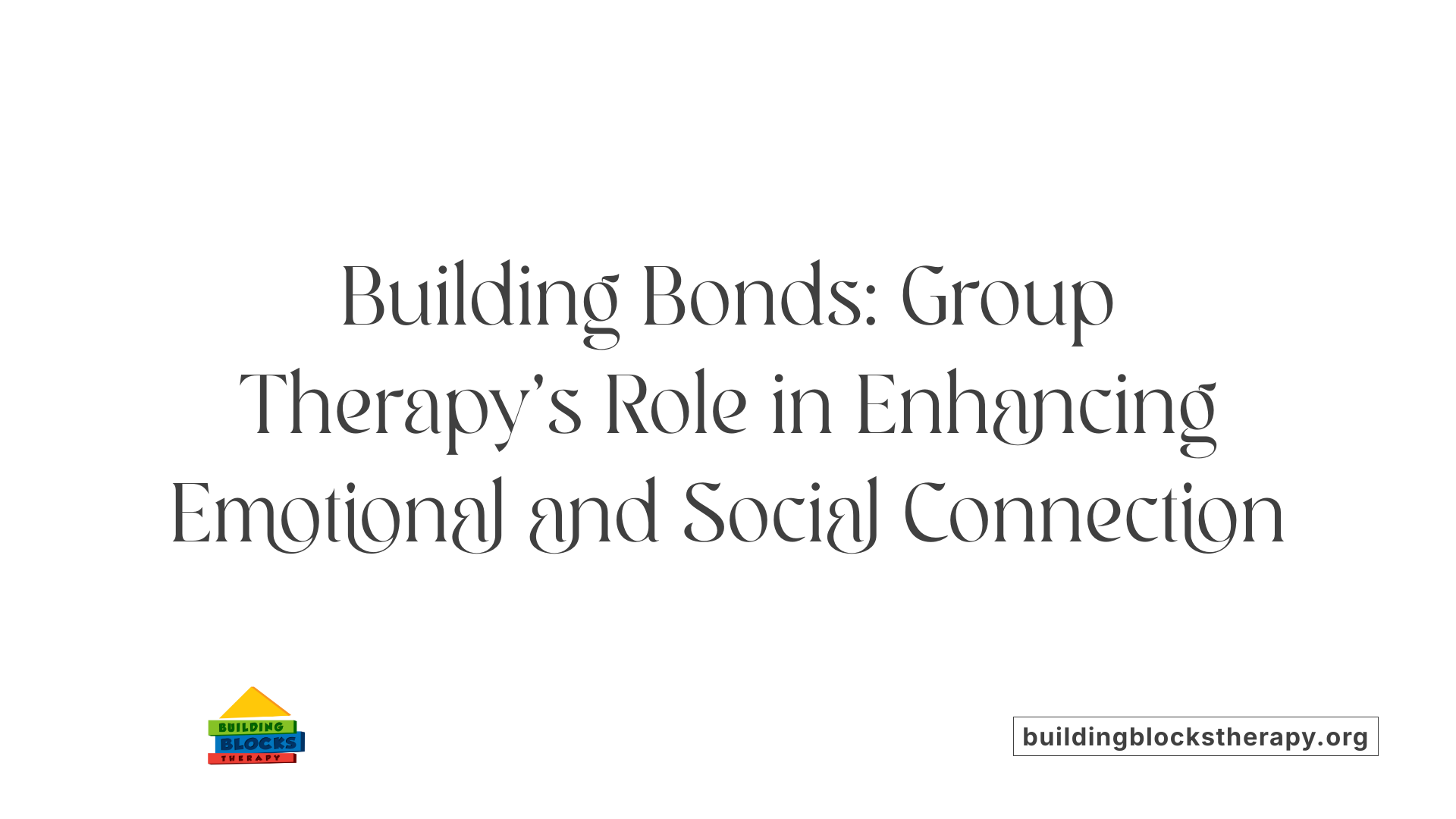
How can group therapy benefit children with autism and social anxiety?
Group therapy provides a structured and nurturing environment where children with autism and social anxiety can develop their social and emotional skills. Activities such as role-playing, cooperative games, and social stories are core components that help children practice essential skills like communication, eye contact, and turn-taking.
One of the key advantages is that it reduces feelings of social isolation by creating opportunities for children to connect with peers who understand their challenges. These shared experiences can significantly boost self-confidence and foster a sense of belonging.
Children have the chance to observe and emulate social cues from their peers, which improves their social understanding and emotional regulation. For children with high-functioning autism, these improvements are particularly beneficial because they help generalize learned skills to school, community, and home environments.
Research shows that group therapy can effectively lower social anxiety levels. Participants often report they feel more confident and competent in social situations after therapy. This is especially evident in self-report measures that indicate substantial gains in social knowledge.
Parents and families also benefit from the emotional support provided in these settings. Sharing experiences with other families helps reduce stress and encourages effective coping strategies. Overall, group therapy offers a supportive space that promotes social skill development, emotional understanding, and mutual regulation, helping children with autism navigate social challenges more successfully.
Conclusion: Nurturing Growth Through Collective Support
Group therapy plays a vital role in helping children with autism spectrum disorder (ASD) develop essential social skills and emotional understanding. It offers a safe, structured environment where children can practice social interactions, learn to recognize social norms, and build confidence through peer engagement. Activities such as role-playing, cooperative games, art therapy, and music foster communication and emotional connection, especially for children who are minimally verbal or have sensory sensitivities.
Research supports the effectiveness of group therapy in enhancing social competence and reducing social anxiety. Studies show that children with high-functioning ASD and comorbid anxiety benefit significantly from targeted interventions like group cognitive-behavioral therapy (CBT). These programs not only lower anxiety severity but also promote lasting improvements that are maintained over months after treatment.
Structured, evidence-based programs are crucial. They combine therapeutic techniques with engaging activities that promote generalization of skills to everyday settings such as school, home, and community. The use of creative and innovative approaches—including sensory-motor activities, rhythmic exercises, and joint movement—enhances social reciprocity, emotional regulation, and body awareness. These methods help children connect with their peers and navigate social environments more effectively.
Support for families is also a cornerstone of effective therapy. Parent support groups offer a space for sharing experiences, gaining insights, and learning coping strategies. Siblings benefit from understanding autism better and develop ways to support their family members. Therapy for parents can help reduce feelings of guilt and burnout, empowering them to better assist their children.
In conclusion, group therapy for children with ASD provides comprehensive benefits—strengthening social skills, fostering emotional development, boosting confidence, and promoting positive peer relationships. When combined with family support and innovative techniques, these programs can significantly improve the social and emotional well-being of children on the spectrum.
| Aspect | Benefits | Additional Details |
|---|---|---|
| Social Skills | Improved interaction, eye contact, verbal skills | Activities like role-playing and structured play |
| Emotional Understanding | Recognition of emotions, empathy development | Group discussions, shared activities |
| Confidence Building | Peer success boosts self-esteem | Reinforcement through social engagement |
| Anxiety Reduction | Lowered social anxiety, decreased severity | Evidence from CBT studies |
| Family Support | Connection, coping strategies | Support groups for parents and siblings |
| Creative Approaches | Engagement, sensory integration | Art, music, movement-based therapies |
| Skill Generalization | Transfer to real-world settings | Practice in therapy mirrors everyday life |
Harnessing the power of collective support through innovative and evidence-based group therapy approaches offers children with autism a pathway towards social competence and emotional resilience, ultimately improving their quality of life.
Empowering Hearts and Minds: The Transformative Impact of Group Therapy
In conclusion, group therapy stands out as a powerful tool in enriching the social and emotional lives of children with autism and social anxiety. Its structured, evidence-based programs facilitate skill enhancement, promote peer connections, and help manage anxiety, all while fostering confidence and resilience. Embracing innovative and creative approaches further amplifies these benefits, creating engaging environments for growth. Supporting families alongside children ensures a holistic approach, addressing the diverse needs that come with autism. As research continues to validate its effectiveness, group therapy remains a vital, adaptable, and compassionate pathway towards helping children realize their full social potential.
References
- Efficacy of group social skills interventions for youth with ...
- Group Cognitive Behavior Therapy for Children with High ...
- Group Therapy for Autism: Improve Social Skills
- Reducing Anxiety in Group Settings for Autism
- Top Benefits of Group Therapy
- Social Anxiety? 3 Reasons to Try Group Therapy
- Creative Group Therapy for Children With Autism


